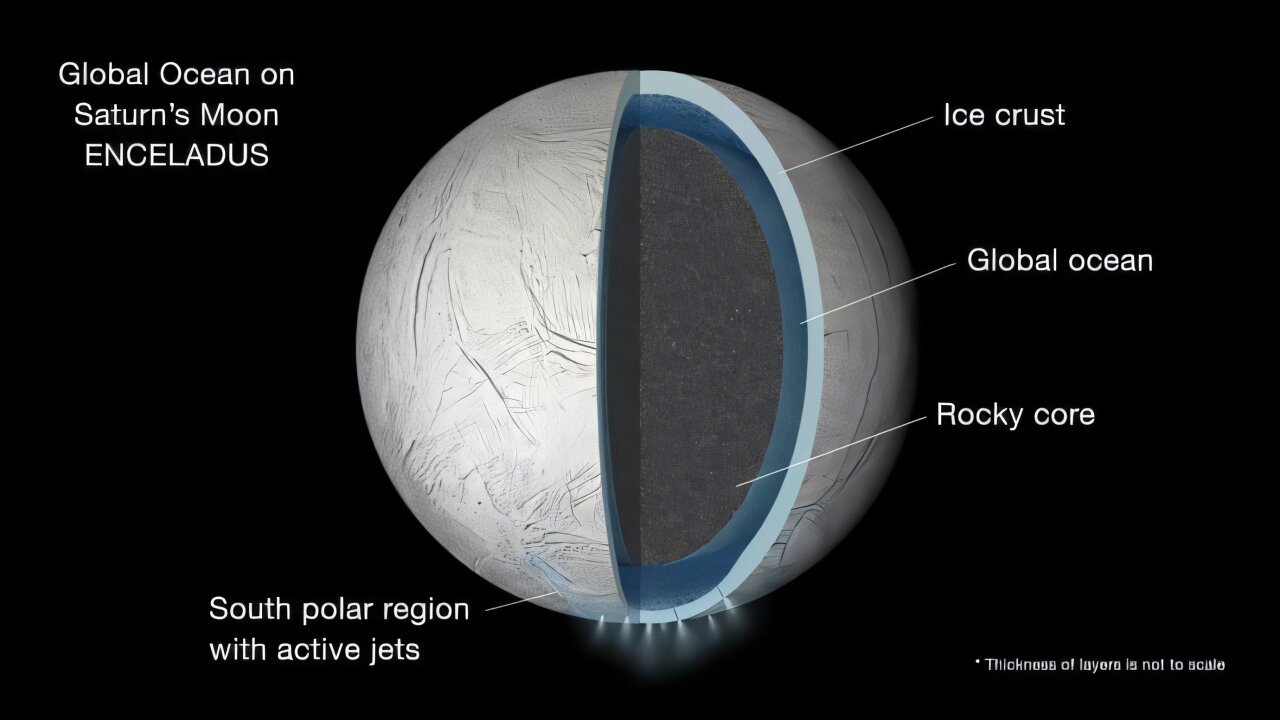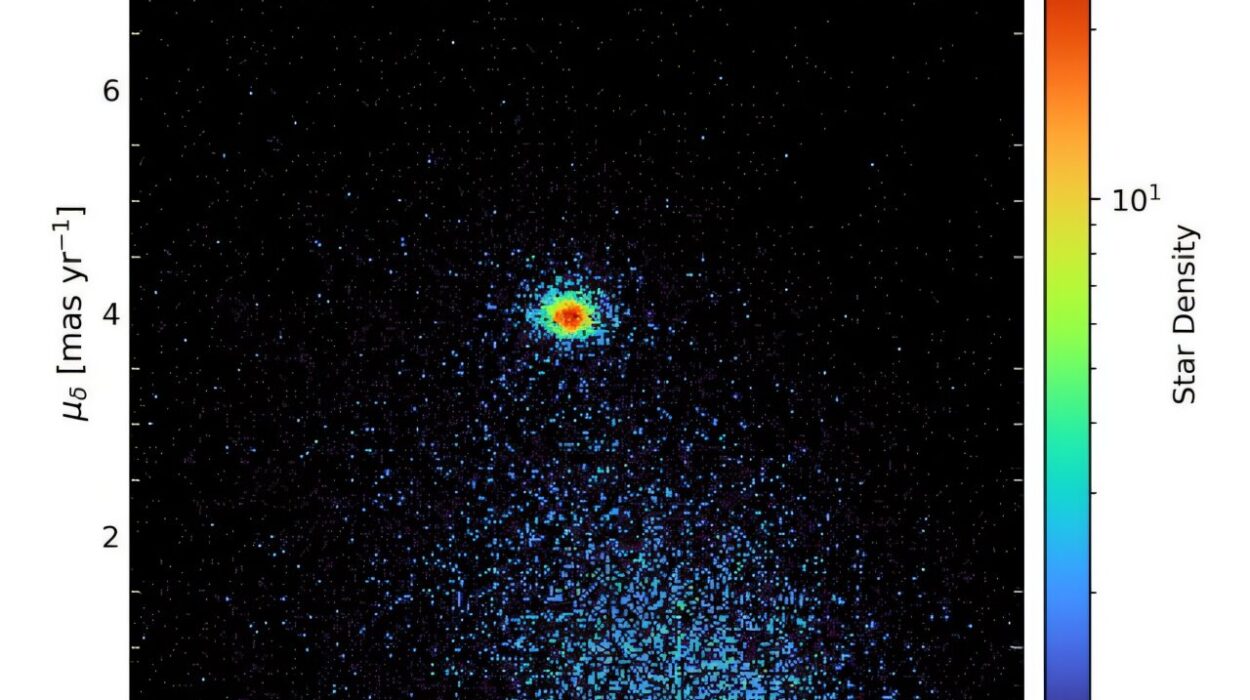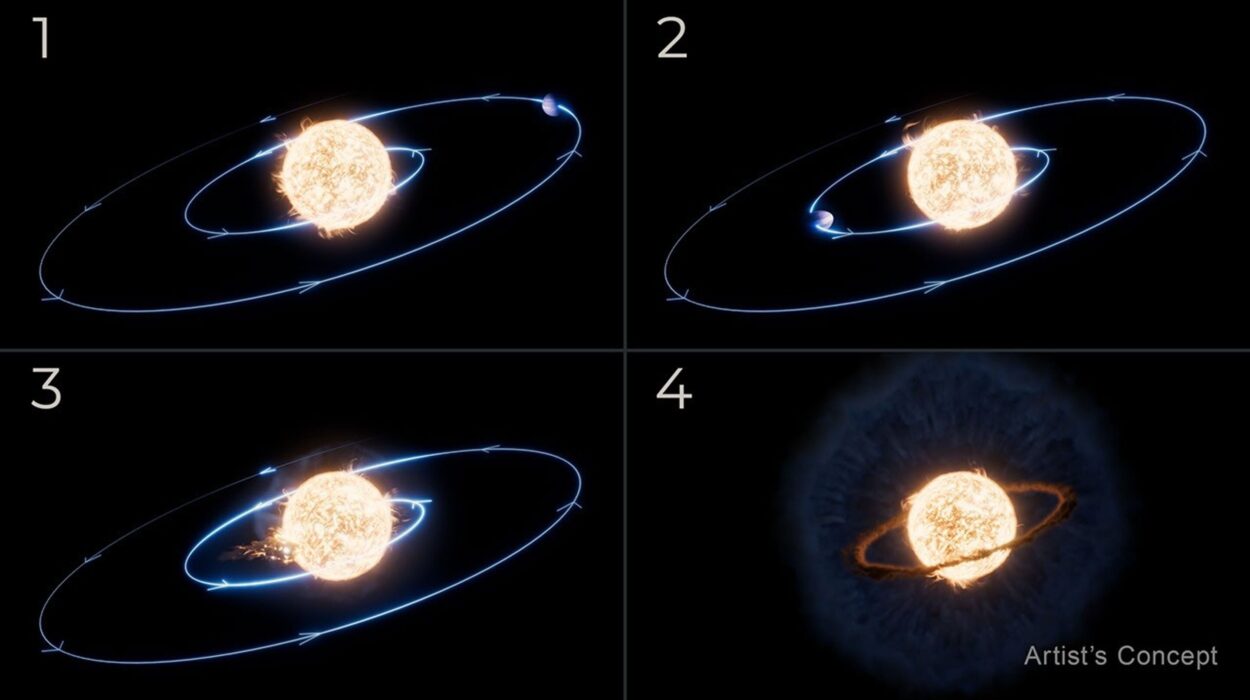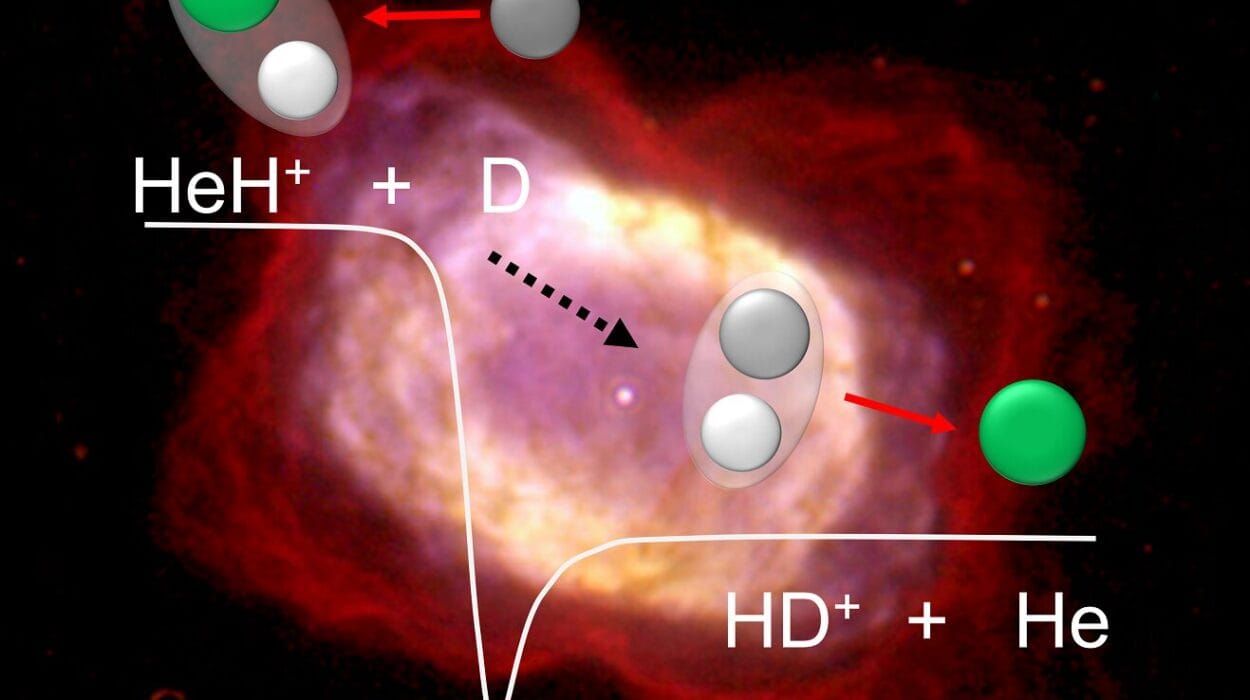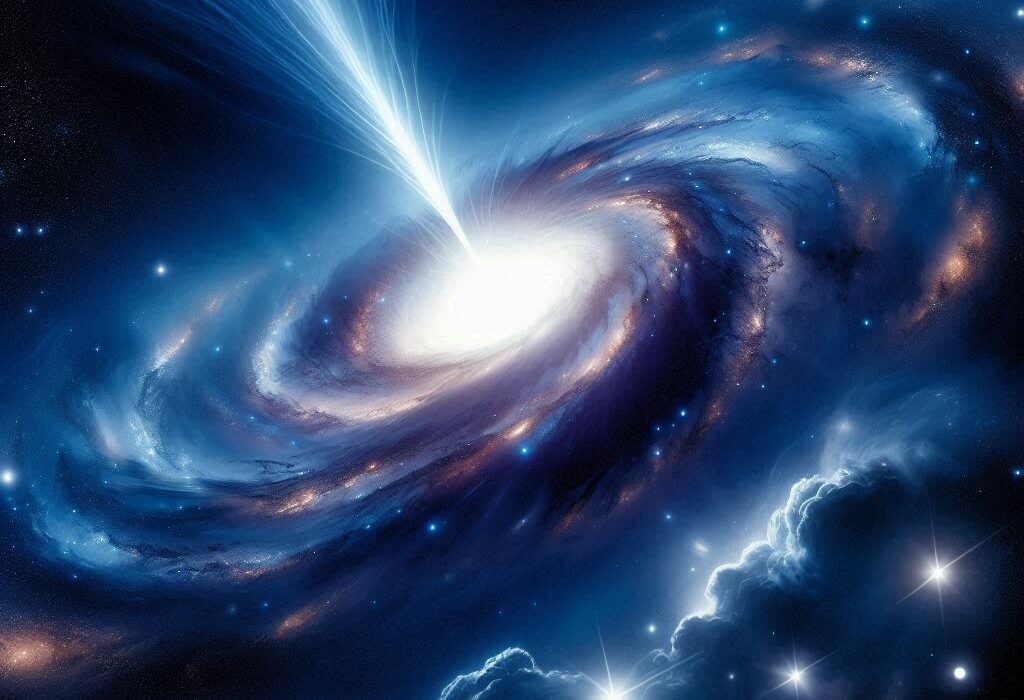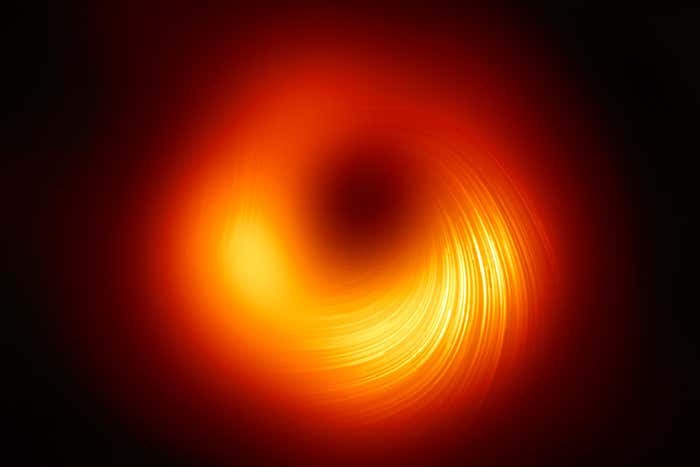Far beyond the warmth of Earth, orbiting a planet adorned in rings, lies a moon barely 500 kilometers across—yet packed with tantalizing promise. Enceladus, Saturn’s icy satellite, is one of the most mysterious and potentially life-harboring worlds in our solar system. Beneath its frozen crust, an alien ocean stirs, fed by heat, minerals, and time. And now, thanks to a new study, we might understand that ocean just a little bit better.
Scientists have just taken a new look at one of the most important aspects of Enceladus’s hidden sea: its pH level. Why does this matter? Because pH is a crucial factor in whether life as we know it can exist. And what they’ve found may shift the way we think about life beyond Earth—not just whether it could survive on Enceladus, but what kind of life might thrive there.
What Cassini’s Final Gift Still Reveals
Though NASA’s Cassini spacecraft ended its mission in 2017 with a dramatic plunge into Saturn’s atmosphere, its legacy is far from over. As it passed close to Enceladus again and again, Cassini flew directly through massive plumes of water vapor erupting from the moon’s south pole—giant geysers that shoot into space from beneath surface cracks known as “tiger stripes.”
Those plumes, scientists now understand, are direct pipelines from Enceladus’s subsurface ocean to the vacuum of space. And like messages in a bottle, they carry chemical clues about the nature of the alien sea hidden below.
In the new study, recently accepted for publication in Icarus and posted on the arXiv preprint server, researchers used Cassini’s data—specifically measurements of phosphates in ice grains sampled during plume flybys—to model the ocean’s chemistry. Their goal: estimate Enceladus’s pH, a measure of how acidic or alkaline the ocean is.
A Surprisingly Alkaline Ocean
Previous assumptions held that Enceladus’s ocean might have a mildly alkaline pH—perhaps between 8 and 9, similar to Earth’s oceans. But this study paints a different picture. According to the computer models, the pH may be far higher—between 10.1 and 11.6. That’s roughly as alkaline as household ammonia.
Eventually, the researchers settled on a probable average pH of 10.6. For context, pure water is neutral at a pH of 7. The human bloodstream sits comfortably around 7.4. Earth’s seawater averages about 8.2. A pH of 10.6 means Enceladus’s ocean is much more basic than any naturally occurring body of water on Earth.
But that doesn’t make it uninhabitable—in fact, quite the opposite.
What pH Tells Us About Life
On Earth, some of the most resilient and ancient life forms exist in extreme environments. Alkaliphilic bacteria, for example, thrive in soda lakes where the pH exceeds 10. Such organisms have evolved unique biochemistries that let them survive where most others would perish.
An alkaline ocean, then, doesn’t rule out life—it may select for a special kind of life.
The researchers believe this high pH is caused by serpentinization—a chemical reaction between seawater and the rocky interior of the moon. This same process occurs deep in Earth’s oceans at hydrothermal vents, where life clings to rock and metal in darkness and heat, fueled by chemistry alone.
Moreover, serpentinization releases hydrogen gas, which Cassini also found in Enceladus’s plumes. On Earth, hydrogen can serve as a food source for certain microbes. Combined with phosphates, organic compounds, and molecular hydrogen, this pH discovery adds yet another piece to Enceladus’s growing puzzle of habitability.
A Closer Look at the Process
To reach these conclusions, the scientists modeled how carbon dioxide—another compound observed in the plumes—interacts with Enceladus’s ocean. CO₂ degassing typically raises water’s pH, much like removing carbonic acid from soda makes it less tart.
But the team found that the CO₂ levels weren’t high enough to account for such a dramatic pH shift. Instead, the basic nature of the ocean likely originates from water-rock interactions deep within the moon, locked in a dance of geochemical reactions over millennia.
This suggests Enceladus’s ocean has been chemically stable for a very long time—a promising sign for any microbial life that might rely on it.
A Tiny Moon, A Monumental Mission
First discovered in 1789 by William Herschel, Enceladus was a quiet, icy dot in the sky for centuries. Even the twin Voyager spacecraft that flew past it in the 1980s barely scratched the surface. Then came Cassini in 2005—and everything changed.
As Cassini observed more than 100 geysers erupting from the “tiger stripes,” it opened an entirely new chapter in the search for extraterrestrial life. Water vapor. Methane. Organics. Hydrogen. And now: phosphates and an alkaline ocean.
Each new clue pushes Enceladus higher on the list of habitable places in our solar system—right alongside Europa and Mars.
What Comes Next: The Enceladus Orbilander
Though Cassini’s mission ended, its data continues to inspire—and future missions are now being designed to pick up where it left off.
Enter the Enceladus Orbilander, a proposed NASA mission that could launch as early as the 2030s. Unlike Cassini, which only flew past the moon, Orbilander would orbit Enceladus for months and then land directly on its surface.
The goal? To taste the plumes, analyze their chemistry in unprecedented detail, and—if possible—detect biosignatures. Life, in other words.
With an ocean rich in hydrogen, organics, phosphate, and a pH similar to Earth’s most extreme environments, Enceladus isn’t just interesting. It’s compelling. It demands attention.
The Big Picture: What If We’re Not Alone?
This new study doesn’t prove life exists on Enceladus. But it dramatically increases the likelihood that its ocean is chemically favorable for life—not just in theory, but in practice.
It shows us that even in the coldest reaches of our solar system, on a moon smaller than the state of Arizona, there may be warmth, motion, chemistry—and perhaps, biology.
As we inch closer to future missions that may dive deeper into this alien sea, one truth becomes more and more difficult to ignore: If life can exist here, beneath ice and over rock, then it can exist almost anywhere.
We may be standing at the edge of a discovery that rewrites the story of life itself.
Reference: Christopher R. Glein et al, Phosphates Reveal High pH Ocean Water on Enceladus, arXiv (2025). DOI: 10.48550/arxiv.2506.20937
